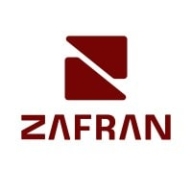


Tufin Orchestration Suite and Lacework FortiCNAPP both compete in the network security management space. While Tufin excels in managing complex firewall environments, Lacework stands out in cloud security solutions.
Features: Tufin Orchestration Suite provides comprehensive visibility and management for complex firewall settings, with its SecureTrack and SecureChange features being highly valued for easing rule management and compliance reporting. It automates network security processes, thus simplifying administration. Lacework FortiCNAPP is notable for its cloud-centric capabilities, effective anomaly detection, compliance scanning, and risk management, offering insights into cloud configurations and continuous monitoring for vulnerabilities.
Room for Improvement: Tufin struggles with usability and integration, particularly in multi-vendor support, and needs enhancements in reporting customization and automation speed. Lacework FortiCNAPP could improve data governance and reduce alert noise through better filtering, needing easier integration with third-party tools and improved remediation features for vulnerabilities.
Ease of Deployment and Customer Service: Tufin is primarily designed for on-premises with hybrid cloud options, and its customer service is generally responsive, though there is variability in support quality. Lacework is better suited for public cloud deployments, praised for consistent, excellent customer service, and swift, effective technical support.
Pricing and ROI: Tufin Orchestration Suite is perceived as expensive with complex licensing, but the automation benefits justify the ROI through time savings in rule management. Lacework's pricing is also high, reflecting its strong cloud security features, with an ROI that emphasizes agile operation and efficient compliance management.
| Product | Market Share (%) |
|---|---|
| Lacework FortiCNAPP | 1.2% |
| Wiz | 11.7% |
| Tenable Nessus | 8.4% |
| Other | 78.7% |
| Product | Market Share (%) |
|---|---|
| Tufin Orchestration Suite | 22.8% |
| AlgoSec | 22.6% |
| FireMon Security Manager | 17.9% |
| Other | 36.699999999999996% |



| Company Size | Count |
|---|---|
| Small Business | 4 |
| Midsize Enterprise | 4 |
| Large Enterprise | 3 |
| Company Size | Count |
|---|---|
| Small Business | 29 |
| Midsize Enterprise | 13 |
| Large Enterprise | 152 |
Zafran Security integrates with existing security tools to identify and mitigate vulnerabilities effectively, proving that most critical vulnerabilities are not exploitable, optimizing threat management.
Zafran Security introduces an innovative operating model for managing security threats and vulnerabilities. By leveraging the threat exposure management platform, it pinpoints and prioritizes exploitable vulnerabilities, reducing risk through immediate remediation. This platform enhances your hybrid cloud security by normalizing vulnerability signals and integrating specific IT context data, such as CVE runtime presence and internet asset reachability, into its analysis. No longer reliant on patch windows, Zafran Security allows you to manage risks actively.
What are the key features of Zafran Security?
What benefits can users expect from Zafran Security?
In industries where security is paramount, such as finance and healthcare, Zafran Security provides invaluable protection by ensuring that only exploitable vulnerabilities are addressed. It allows entities to maintain robust security measures while allocating resources efficiently, fitting seamlessly into existing security strategies.
Lacework FortiCNAPP provides robust cloud security, combining vulnerability management and multi-cloud insight with user-friendly controls, machine learning detection, and compliance support.
Lacework FortiCNAPP specializes in cloud security by merging machine learning anomaly detection with agent-based vulnerability management to offer detailed alerts and compliance reports. Its comprehensive approach allows continuous monitoring across AWS and Kubernetes, providing insights from an attacker's perspective. The platform offers automation and seamless Slack integration, facilitating collaborative and efficient cloud security management. Users value its ability to handle multi-cloud environments and scan IAC scripts, configurations, and compute nodes across AWS and GCP.
What are the key features?Organizations across sectors leverage Lacework FortiCNAPP for cloud security, focusing on compliance, security posture, and vulnerability management. It is widely used for monitoring AWS and Kubernetes environments, scanning IAC scripts, configurations, and securing compute nodes. It supports multi-cloud security posture management and log ingestion, enabling companies to maintain strong cloud infrastructures without dedicated security layers.
Tufin enables organizations to automate their security policy visibility, risk management, provisioning and compliance across their multi-vendor, hybrid environment. Customers gain visibility and control across their network, ensure continuous compliance with security standards and embed security enforcement into workflows and development pipelines.
We monitor all Vulnerability Management reviews to prevent fraudulent reviews and keep review quality high. We do not post reviews by company employees or direct competitors. We validate each review for authenticity via cross-reference with LinkedIn, and personal follow-up with the reviewer when necessary.